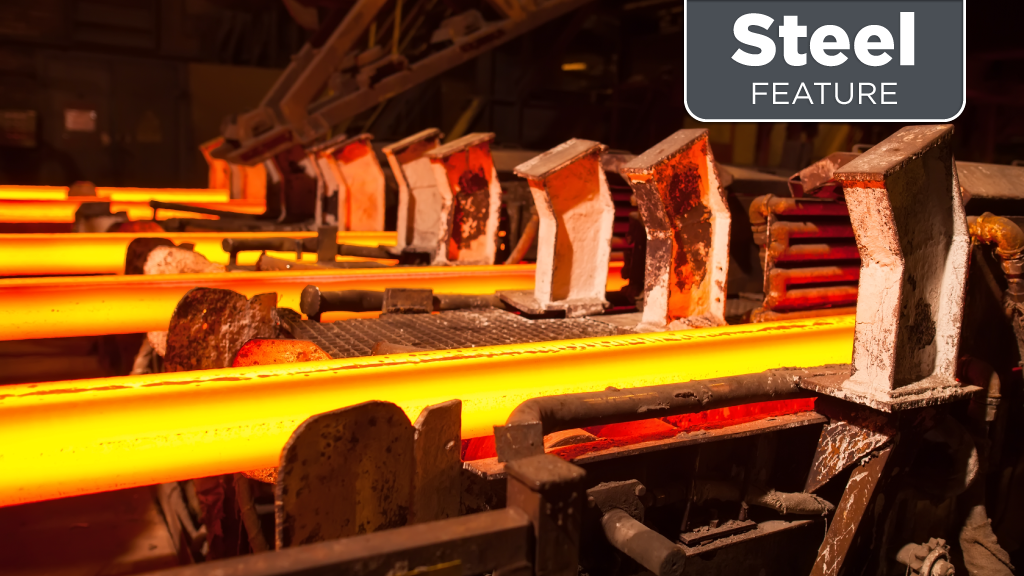The odds of Canada’s steel industry getting to net zero emissions by 2050 improved dramatically thanks to the federal government and steel giants ArcelorMittal Dofasco (AMD) and Algoma announcing billions of dollars of investment in carbon dioxide (CO2) cutting projects during the production process.
“These investments not only support our great jobs, but also the Canadian economy and our efforts on climate change as a country,” says Catherine Cobden, president and CEO of the Canadian Steel Producers Association (CSPA), which represents the primary steel and the pipe and tube industry across the country.
“The estimate is that it will reduce the emissions in total by six million tonnes annually — equivalent to almost two million cars being taken off the road.”
Together, the anticipated reduction by the two companies will represent almost one per cent of Canada’s annual CO2 emissions.
At an AMD plant in Hamilton, a federal investment of up to $400 million, and an investment of $1.35 billion by the company, will lead to construction of a new direct reduced iron (DRI) furnace, along with an electric arc furnace (EAF) which will replace the company’s coke ovens, blast furnaces and basic oxygen furnace.
The DRI furnace will use natural gas to convert iron ore to liquid iron. The natural gas furnace will reduce GHG emissions significantly. The EAF will use low-carbon electricity to further process the liquid iron into steel using scrap steel.
The DRI furnace will also be built so it can be run on hydrogen once it becomes available sometime after start-up. Hydrogen would remove oxides from ore with zero CO2 emissions if it is produced with carbon-free electricity.
The new furnaces are scheduled to be operational by 2028 and will lead to a reduction of approximately three million tonnes of CO2 from the AMD plant.
Algoma, meanwhile, announced construction of two EAFs that will rely on scrap steel as a feedstock, phasing out its coke ovens and blast furnaces which emit more CO2. The electricity-based process is expected to cut greenhouse gas emissions by more than three million metric tonnes per year by 2030.
A federal investment of up to $420 million is coming from the Net Zero Accelerator Initiative (NZAI). Total cost of the project is $703 million. As many as 500 jobs will be created as a result of the project.
The changes will enable Algoma to use low-carbon electricity and dramatically reduce CO2 emissions. The project is expected to take 30 months.
Cobden says the NZAI is a federal program that is available for really dramatic and significant CO2 reductions so it is encouraging to see the two Ontario steel firms factor into the program.
“There are two of them that have made it through that system from the steel industry,” she says.
The initiatives are important, she notes, because it shows that government is a supportive and willing partner in very substantial projects aimed at reducing emissions in the steel industry.
“I also believe it demonstrates that the government understands the steel industry can and does have an important role to play in the future of our low-carbon economy. So, I think that is quite critical.”
Canadian companies are already producing some of the “greenest” steel in the world and the investments will further that cause, Cobden says.
Indeed, Global Efficiency Intelligence, an energy and environmental consulting and market research firm in the U.S., did an international benchmarking study and ranked Canada’s steel production facilities as first and second in categories related to CO2 emissions, well ahead of other key steel-producing nations.
The CSPA has been working to get steel producers to take action to curb CO2 emissions. In March 2020, the association released a Climate Call to Action that outlines the key conditions needed to ensure the long-term sustainability of the domestic steel industry.
Part of the call to action is demonstrating to governments — and Canadians — that the CSPA is a partner in the climate-change fight. Another is getting financial support for transformational projects for the industry.
“There is no one-size-fits-all here,” explains Cobden. “There is a broad array, frankly, of policies that probably all large emitters are going to need to achieve this objective and so that’s what our plan does. It gives policy-makers those direct recommendations on what’s going to help us get to net zero.”
With funding now in place for projects at the two large steel producers, the companies and industry must get down to doing the “long-haul work,” she says.
“This is going to take research, this is going to take effort to promote green steel, this is going to take an effort to look at procuring green steel, protecting our borders even more from dumping of steel that’s not green.”
As technology evolves, there will also be new ways found to produce greener steel, including what role hydrogen might play in the production of steel.
“We’re very excited about that question, but it’s not going to be a question that’s going to be answered in the next 10 years,” says Cobden. “We see it actually requiring 20, 30 years to get there.”








Recent Comments